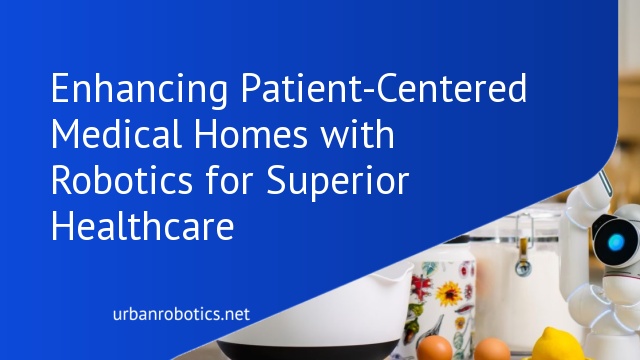Understanding Patient-centered Medical Homes
Patient-centered medical homes (PCMH) create a healthcare environment that focuses on comprehensive, personalized care. They utilize both advanced technology and caregiver expertise to enhance patient outcomes.
Definition and Core Principles
Patient-centered medical homes aim to provide holistic care that addresses all of a patient’s health needs. Core principles include comprehensive care, patient-centeredness, coordinated care, accessible services, and a commitment to quality and safety. These principles ensure that patients receive continuous and coordinated care tailored to their individual health conditions.
Benefits to Patients and Providers
PCMHs offer numerous benefits to both patients and providers. For patients, these homes provide improved access to healthcare, better management of chronic conditions, and enhanced satisfaction with care. Providers benefit from increased efficiency, reduced paperwork, and higher patient adherence to treatment plans. This collaborative approach leads to better health outcomes and a more effective use of healthcare resources.
Role of Robotics in Healthcare
Robotics transforms healthcare delivery in patient-centered medical homes. These advanced technologies contribute significantly to various aspects of patient care.
Current Applications of Robotics
Robots handle diverse tasks in healthcare settings. Surgical robots assist with precision tasks, enhancing outcomes in surgeries such as prostatectomies and hysterectomies (source: Mayo Clinic). Autonomous mobile robots deliver medications, reducing nurse workload (source: Stanford Medicine). Telepresence robots facilitate remote consultations, improving access to care, especially in underserved areas. Robotic process automation optimizes administrative tasks, such as patient scheduling, freeing up human resources for more critical functions.
Advantages and Challenges
Robotics in healthcare offers numerous advantages. Enhanced precision in surgeries reduces recovery times. Automated tasks lead to increased efficiency and minimized human error. Remote consultations bridge the gap for patients with limited access to medical services. However, challenges remain. High costs of robotic systems can be prohibitive for many healthcare facilities. Integration with existing systems and workforce training require significant investment. Addressing these issues is essential for widespread adoption and maximized benefits.
Integration of Robotics in Medical Homes
Patient-centered medical homes (PCMH) leverage robotics to transform healthcare delivery. Robotics enhance patient care by automating various tasks and enabling more precise treatments.
Case Studies and Examples
Several PCMHs have successfully integrated robotics. For instance, the Mayo Clinic uses robotic systems in post-surgery rehabilitation to provide personalized therapy plans. Another example is the Cleveland Clinic’s use of robotic medication dispensers, which ensure accurate dosage and timing, improving patient adherence and reducing errors. These implementations demonstrate significant improvements in patient outcomes and operational efficiency.
Technological Innovations
Robotics technology in healthcare is rapidly evolving. Robotic surgical systems, like the Da Vinci robot, allow surgeons to perform minimally invasive procedures with greater precision. Autonomous mobile robots (AMRs) handle routine tasks, such as delivering lab samples or medications, effectively freeing up healthcare staff to focus on patient care. Additionally, AI-powered diagnostic tools assist clinicians in early disease detection, enhancing the overall efficiency of PCMHs.
Impact on Patient Care
Robotics in patient-centered medical homes (PCMHs) significantly enhance patient care. The integration of cutting-edge technology benefits efficiency, accuracy, patient satisfaction, and outcomes.
Improved Efficiency and Accuracy
Robotics streamline workflows by automating repetitive tasks and performing precise operations. For example, robots handle administrative duties like appointment scheduling and patient data management, reducing human errors. In clinical settings, robotic systems such as Autonomous Mobile Robots (AMRs) efficiently deliver lab samples and medications, ensuring timely and accurate distribution. This efficiency frees healthcare professionals to focus on patient care, significantly improving overall accuracy.
Patient Satisfaction and Outcomes
Advanced robotics boost patient satisfaction by enabling personalized and precise treatments. AI-powered diagnostic tools identify diseases early, allowing for timely interventions. Robotic medication dispensers, such as those at Cleveland Clinic, ensure patients receive accurate doses, reducing errors and improving adherence. Enhanced precision and timely care contribute to better health outcomes, fostering trust and satisfaction in patients.
Future Prospects
Advancements in robotics promise to reshape patient-centered medical homes, optimizing patient care and healthcare delivery.
Emerging Trends
The integration of AI and machine learning in robotics is driving innovations in PCMHs. Robots equipped with these technologies can analyze patient data to provide predictive analytics and personalized treatment plans. Telepresence robots enable remote consultations, enhancing accessibility for patients in rural areas. Surgical robots are becoming increasingly precise, minimizing recovery times and improving outcomes.
Conclusion
The future of patient-centered medical homes is undeniably intertwined with the advancements in robotics. By automating tasks and enhancing precision, robotics are transforming healthcare delivery. With AI and machine learning driving innovations, we’re witnessing a new era of personalized care. Telepresence robots and advanced surgical systems are just the beginning of what’s possible. As we continue to integrate these technologies, our focus remains on optimizing patient care and improving health outcomes. The blend of human expertise and robotic efficiency promises a brighter, more efficient future for healthcare.





